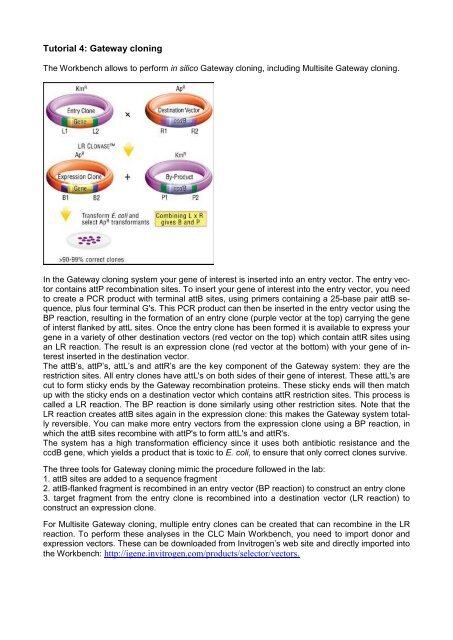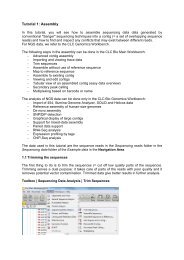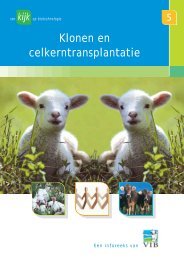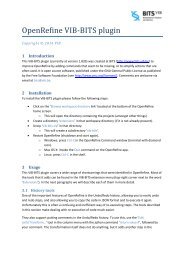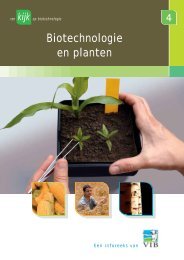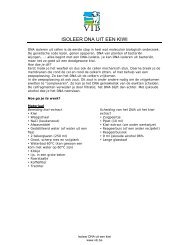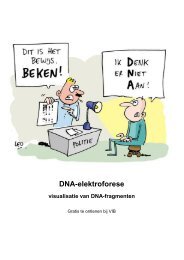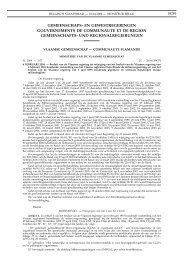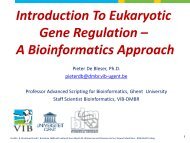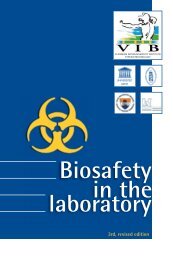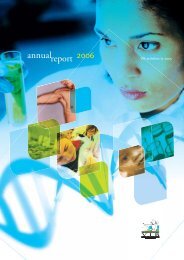You also want an ePaper? Increase the reach of your titles
YUMPU automatically turns print PDFs into web optimized ePapers that Google loves.
Tutorial 4: Gateway <strong>cloning</strong><br />
The Work<strong>be</strong>nch allows to perform in <strong>silico</strong> Gateway <strong>cloning</strong>, including Multisite Gateway <strong>cloning</strong>.<br />
<strong>In</strong> the Gateway <strong>cloning</strong> system your gene of interest is inserted into an entry vector. The entry vector<br />
contains attP recombination sites. To insert your gene of interest into the entry vector, you need<br />
to create a PCR product with terminal attB sites, using primers containing a 25-base pair attB sequence,<br />
plus four terminal G's. This PCR product can then <strong>be</strong> inserted in the entry vector using the<br />
BP reaction, resulting in the formation of an entry clone (purple vector at the top) carrying the gene<br />
of interst flanked by attL sites. Once the entry clone has <strong>be</strong>en formed it is available to express your<br />
gene in a variety of other destination vectors (red vector on the top) which contain attR sites using<br />
an LR reaction. The result is an expression clone (red vector at the bottom) with your gene of interest<br />
inserted in the destination vector.<br />
The attB’s, attP’s, attL’s and attR’s are the key component of the Gateway system: they are the<br />
restriction sites. All entry clones have attL's on both sides of their gene of interest. These attL's are<br />
cut to form sticky ends by the Gateway recombination proteins. These sticky ends will then match<br />
up with the sticky ends on a destination vector which contains attR restriction sites. This process is<br />
called a LR reaction. The BP reaction is done similarly using other restriction sites. Note that the<br />
LR reaction creates attB sites again in the expression clone: this makes the Gateway system totally<br />
reversible. You can make more entry vectors from the expression clone using a BP reaction, in<br />
which the attB sites recombine with attP's to form attL's and attR's.<br />
The system has a high transformation efficiency since it uses both antibiotic resistance and the<br />
ccdB gene, which yields a product that is toxic to E. coli, to ensure that only correct clones survive.<br />
The three tools for Gateway <strong>cloning</strong> mimic the procedure followed in the lab:<br />
1. attB sites are added to a sequence fragment<br />
2. attB-flanked fragment is recombined in an entry vector (BP reaction) to construct an entry clone<br />
3. target fragment from the entry clone is recombined into a destination vector (LR reaction) to<br />
construct an expression clone.<br />
For Multisite Gateway <strong>cloning</strong>, multiple entry clones can <strong>be</strong> created that can recombine in the LR<br />
reaction. To perform these analyses in the CLC Main Work<strong>be</strong>nch, you need to import donor and<br />
expression vectors. These can <strong>be</strong> downloaded from <strong>In</strong>vitrogen’s web site and directly imported into<br />
the Work<strong>be</strong>nch: http://igene.invitrogen.com/products/selector/vectors.


